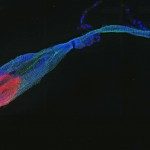Link to Pubmed [PMID] – 21292978
Science 2011 Feb;331(6017):596-8
Population subgroups of the African malaria vector Anopheles gambiae have not been comprehensively characterized owing to the lack of unbiased sampling methods. In the arid savanna zone of West Africa, where potential oviposition sites are scarce, widespread collection from larval pools in the peridomestic human habitat yielded a comprehensive genetic survey of local A. gambiae population subgroups, independent of adult resting behavior and ecological preference. A previously unknown subgroup of exophilic A. gambiae is sympatric with the known endophilic A. gambiae in this region. The exophilic subgroup is abundant, lacks differentiation into M and S molecular forms, and is highly susceptible to infection with wild Plasmodium falciparum. These findings might have implications for the epidemiology of malaria transmission and control.
